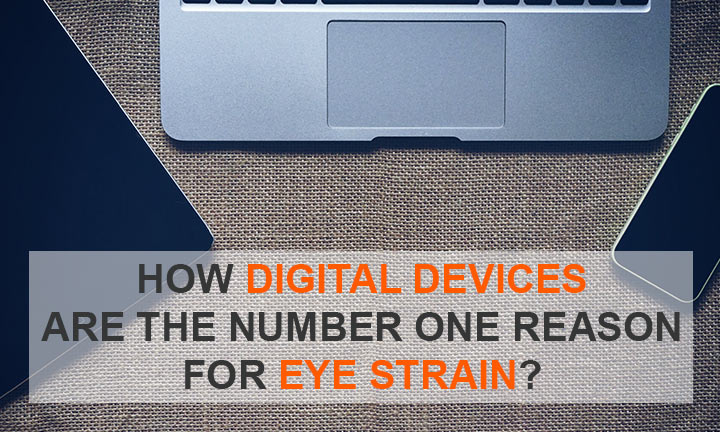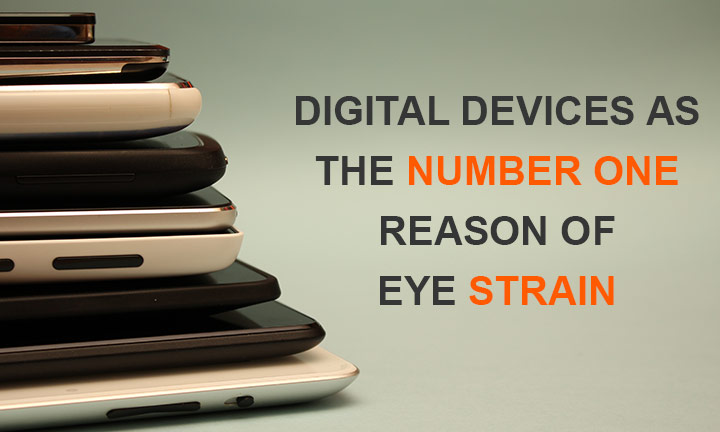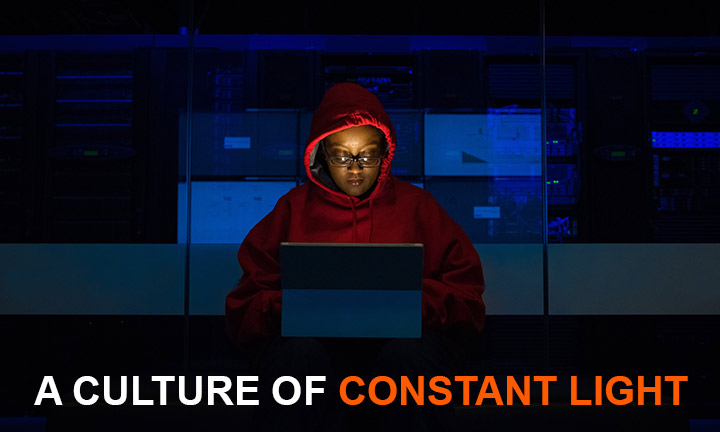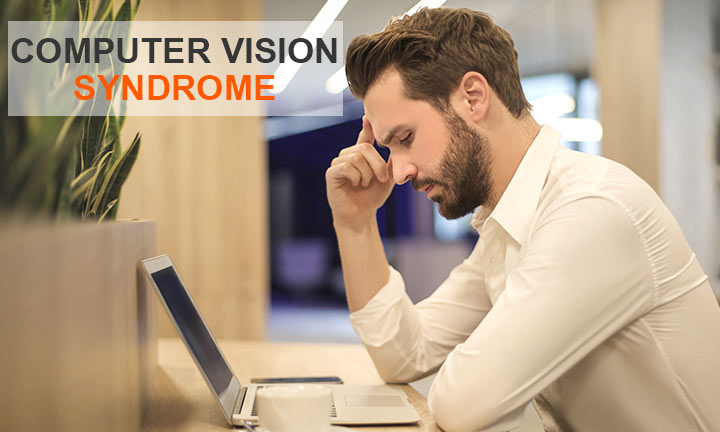5th, September 2019 | Donna
How Digital Devices Are the Number One Reason for Eye Strain

The screens we’ve come accustomed to facing and interacting with throughout our normal life, however, are like any other tool that must be used properly and safely.
In this article, you’ll read about the reasons why digital devices are the number one reason for eye strain.
DIGITAL DEVICES AS THE NUMBER ONE REASON OF EYE STRAIN

The wonders of modern life sure has made several things easier. Being able to work, play, and manage our daily tasks through handy displays on our devices has saved several precious hours of daylight.
We wouldn’t want them to negatively affect our life more than it can help us.
The electronic displays on our phones, computer monitors are not as easy on the eyes as they might initially feel when you get them.
As we continue using them slowly integrating them as a fundamental part of our lives, we don’t always notice all the ways these displays affect us.
And although our parents may have exaggerated about going blind from staring at the TV screen for too long, the warm glow from our displays can have some adverse effects on our vision in the long run.
A Culture of Constant Light

White collar jobs have been booming in numbers ever since the rise of the digital age.
With the ease and cost-efficiency brought by computers, most of our work have been moving steadily to the clear displays of our glowing screens.
All these new monitor displays that we have incorporated into how we make our livelihood and enjoy our leisure change the way perceive our surroundings more than we realize.
While it feels like they’ve been out there for a while now, modern medicine is still studying many of the long-term effects that may arise.
And eventually, we can have them developed to more naturally fit with how our biology works.
For now though, these digital displays are only mostly harmless with the worst effects reaching us when we use them too frequently.
We see it now with the all too common presence of back pains, eye problems, and frequent headaches.
And the main culprit for the sudden ubiquity of these health problems has all along been under our noses, above our heads, and blasting in our faces. Light.
The Rise of Blue

As most of us know, visible light is a small portion of the light spectrum that we can see with our own eyes.
Closer to the invisible ultraviolet radiation or UV rays, is visible blue light with its shorter wavelength and higher energy.
A small part of daylight, and certainly not the most harmful when sitting alongside UV rays, blue light is creeping up in prevalence. Our exposure to it continues on at night when we use our devices.
And with the nature of how we use our screens, the exposure is far more direct and unrestrained.
It’s when we slouch over our office desk or curl up with our phones in our faces just before we’re trying to sleep.
Blue light is also associated with our own circadian rhythm, our internal body clock, and helps us naturally feel more awake during the daytime.
As positively stimulating as it is every morning, the same blue light late at night can very subtly disrupt our sleep cycles.
The insomnia caused by our electronic devices can have severe impacts on our life and its symptoms get well past than just eye strain including fatigue, irritability and depression.
Computer Vision Syndrome

The collection of symptoms resulting from our modern office lifestyle or excessive use of computer screens can all be categorized under Computer Vision Syndrome (CVS).
This covers more than just problems with our eyesight because many of the common malpractices with computer use is tied to our life in an office or playing long hours of video games.
Both activities entail sitting and staring at a computer monitor for a long time with minimal movement. And unlike televisions, we typically get up close with our computers and various digital devices.
– We aren’t just casually glancing at our screens in the saw way as when we look at our surroundings.
There’s typically so much to look and understand, that we actually blink far less than we usually do. Our eyes need to blink to keep our eyes nice, moist and comfortable.
– Keeping our eyes unmoving and focused on a single area, dry eyes, or staring fixed at any light source can cause blurred vision.
One might even experience a noticeable delay in refocusing our eyes.
– The extra effort our eyes expend in maintaining focus can cause headaches and dizziness.
Displays with low contrast or small text means that our eyes and mind work harder in processing information.
– Related through our use of mobile phones and computer monitors in an office setting, many people who have CVS also have neck, shoulder and lower back pains. Sitting for hours at a time is straining on the body.
Dim The Lights and Keep Distance

Someone who spends plenty of time in front of a computer a lot can take just a few simple measures to reduce digital eye strain.
Any casual office worker or gamer could benefit from reducing blue light by making the few easy adjustments to their workplace.
Several devices from our computer screens to our mobile phones also come with the functionality to reduce their own blue light radiation.
Many devices with their displays at their default factory settings are actually too bright for regular use.
Tinkering around with your display settings can go a long way to increase our comfort in using them.
You can make the text easier to read, raise the contrast on your screen, and raise the refresh rate.
Some of them look clunky but installing matte screen filters will reduce glare.
These will soften the light coming from you devices and make them easier and more comfortable to look at for hours at a time.
Keep yourself away from the screen and at an angle slightly higher than your screen.
A good relaxed posture can prevent several body pains.
Computer glasses.
Eyewear with blue-light filters or a yellow tint can be used to mitigate eye strain caused by blue light.
Strange as it is to remind yourself, remembering to blink helps. One might also consider using artificial tears.
Take frequent breaks from looking at your screen.
You can, for every twenty minutes, look at something a little further away for about twenty seconds.
This gives your eyes a short rest from focusing on your screens.
Similar ways to reduce digital eye strain is to dim the lights in our offices and rooms.
This is to match the light from our monitors but not so much so the glow from the monitors become the most prevailing light source in the immediate surroundings.
Talk to a doctor.
Getting an eye exam can unveil underlying problems with your vision that can be treated or corrected with prescription glasses.
The right glasses can even make frequent headaches go away.
FINAL THOUGHTS:
We can’t always avoid overextending the limits of our eyesight, the rigors of modern life demands a lot from each one of us.
The small sacrifices we take can go far and high, however, so electronic devices are worth keeping.
Keeping our eyesight at its best condition is one the biggest ways that most of us can take to improve one’s life.
So it’s always a good idea to come up with new ways and develop the right habits to counter the effect of digital devices as the number one reason for eye strain.
REFERENCES:
https://opto.ca/health-library/computer-vision-syndrome-digital-eye-strain
https://www.health.harvard.edu/diseases-and-conditions/electronic-screen-alert-avoid-this-vision-risk
https://www.webmd.com/eye-health/prevent-digital-eyestrain
http://www.wellness.uci.edu/toolkit/march/screenstrain.pdf

Leave a Reply
You must be logged in to post a comment.